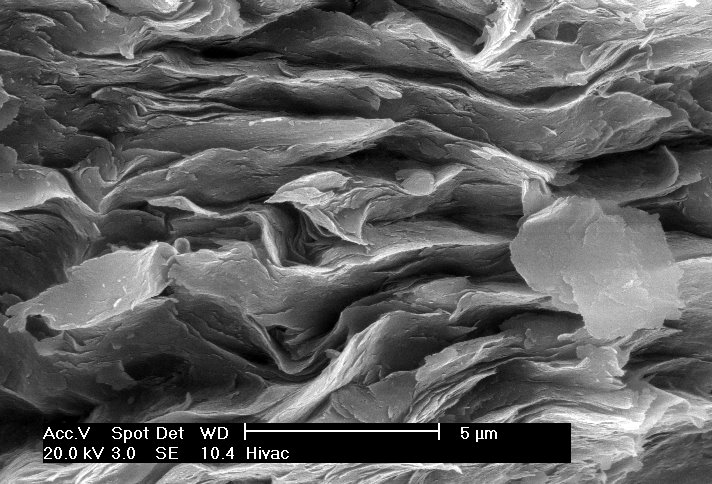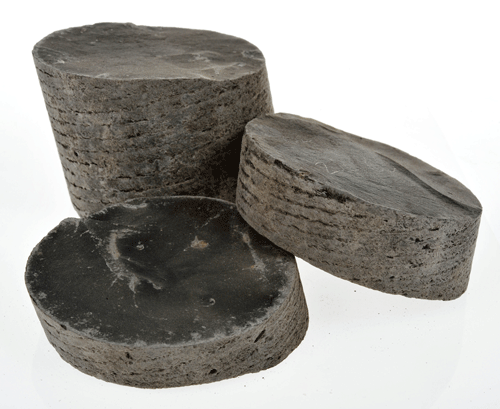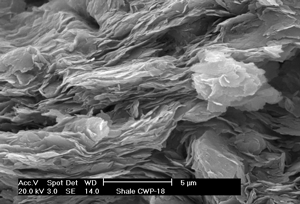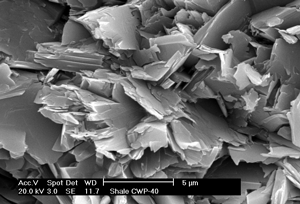The term shale is often used as a very general term for all kinds of clay rich sedimentary rocks. Shales are the most abundant kind of all sedimentary rocks accounting for around 60% of the stratigraphic column. As such, most of the time spent drilling oil wells is spent drilling through shales. Clay minerals account for about 50-60 wt.% of most shales and are often responsible for many of the problems encountered when drilling through shales. Shales are now also a focus of interest in terms of unconventional oil and particularly 'shale gas', and we have wide experience in the analysis of samples from many unconventional provinces.
.

Various authors have calculated the mineralogical composition of an 'average' shale. Two estimates are shown below:
Shaw and Weaver (1965) | Hillier (2006) | |
|---|---|---|
Quartz | 30.8 | 23.9 |
Feldspar | 4.5 | 3.7 (K-spar) 2.4 (Plag.) |
Carbonate | 3.6 | 7.5 (Calcite) 1.3 (Dolomite) 0.5 (Siderite |
Fe-oxides | 0.5 | 0.8 |
Clay minerals | 60.9 | 47.7 (Di-clay) 7.5 (Tri-clay) |
Other minerals | 2 | 0.5 (Pyrite) |
Organic matter | 1 | Not determined |
We determine the mineralogical compositions of shales primarily by advanced X-ray powder diffraction analyses. These include determinations of the bulk (whole rock) compositions of shales by full pattern fitting and more even more detailed determinations of the types of and relative abundance of clay minerals based on analyses of clay size fractions, usually <2 micron. In addition chemical analyses, for example by XRF give complimentary information on the chemical composition of shales. We also often determine various chemical and physical properties such as cation exchange capacity (CEC), surface area and porosity. Fundamentally the reactivity of many shales is determined by how the clay minerals they contain influence chemical and physical properties and our analyses can help you understand the behaviour of your shales in the subsurface. Where shale gas is the interest, desirable physical properties such as brittleness can also be related to mineralogical compositions. As shown in the image above, we can also use techniques such a Scanning Electron Microscopy (SEM) to view the micro-structure of shales. The maturity of shales (degree of diagenesis) is also a factor that influences brittleness and fracturability, since crystal growth processes, particularly of clay minerals result in coarsening of particle size and resultant changes in texture.
YOUNG SHALE OLD SHALE


- Shaw D.B. & Weaver C.E. 1965. The mineralogical composition of shales. J. Sed. Pet. 35, 213-222.
- Hillier, S., 2006, Appendix A. Mineralogical and chemical data, in GM Reeves, I Sims, and JC Cripps eds., Clay materials used in construction: London, Geological Society, Engineering Geology Special Publications Volume 21, p. 449-459.


